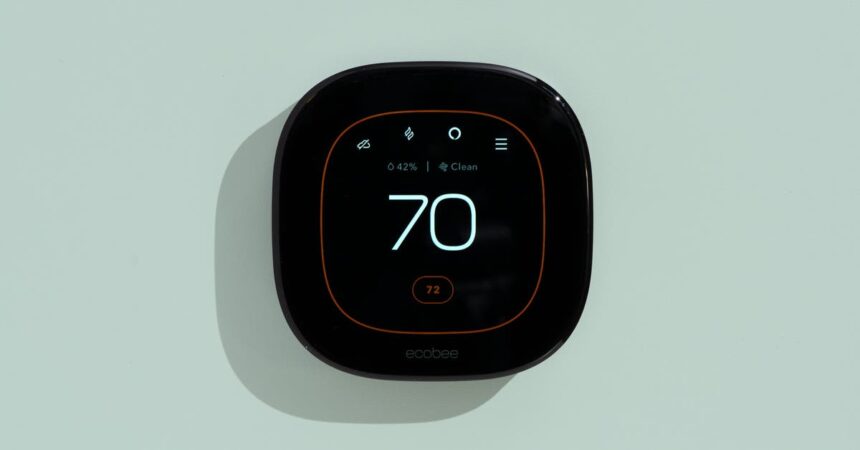What makes smart thermostats so great? They not only keep your home’s temperature comfortable, but they also accomplish this while saving money and, not coincidentally, combating climate change by conserving energy resources. And the smartest ones carry out all these tasks automatically.
Our choice, the Ecobee Smart Thermostat Premium, maintained a consistently pleasant temperature throughout the year better than any other model we tested, likely because of its ability to calculate the impact of humidity on comfort. It comes with a remote SmartSensor, which balances temperatures in your home, and features a built-in smart speaker for use with Alexa or Siri. Ecobee’s privacy policy is top-notch, and the company continues to offer support for even its earliest models.
Our choice
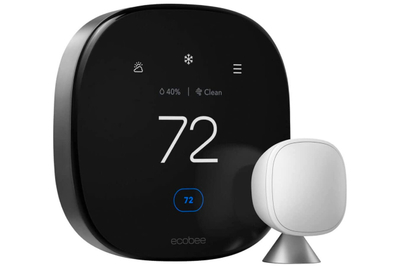
Ecobee’s top-tier model comes with the best remote sensor we’ve tested, a built-in microphone and speaker, Alexa for voice control, and an air-quality monitor.
Compatible with: Amazon Alexa, Apple Home, Google Home, Samsung SmartThings
Our top choice, the Ecobee Smart Thermostat Premium, may not be the easiest model to set up, but it is the best overall for maximizing efficiency. It offers numerous settings to fine-tune your indoor climate, includes the smartest remote sensor available, can be adjusted via voice commands, and can play audio through a built-in Alexa smart speaker. In our tests, it was by far the best at keeping the entire house consistently comfortable. (The Ecobee Smart Thermostat Enhanced, with fewer features, performs just as well and is much cheaper.)
Runner-up
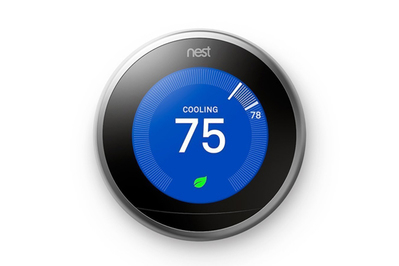
The smartest thermostat is also the easiest to set up using AI, but those extra brains come at a higher price.
Compatible with: Amazon Alexa, Google Home, Samsung SmartThings
For an easier setup, the Google Nest Learning Thermostat is the best option because built-in AI does most of the work for you. It doesn’t come with a remote sensor (and Nest’s are not as useful as Ecobee’s) or have built-in smart-speaker capabilities, which some owners may not need anyway. And some users have found that they sometimes have to override Nest’s AI to optimize their comfort and energy savings.
Budget option
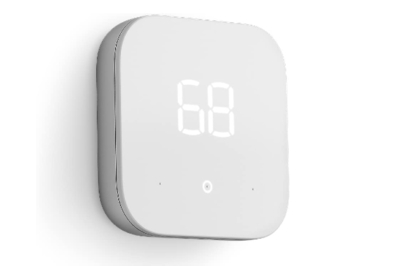
Though not as advanced as our other picks, this thermostat works with a wide variety of HVAC systems, is extremely easy to use, and is affordable.
Compatible with: Amazon Alexa, Ring
The Amazon Smart Thermostat may be basic, with simple controls and rudimentary AI, but it does its job well, and for some people that makes it perfect. It can be configured to run on a timed schedule, or, using Alexa Hunches (Amazon’s term for Alexa’s AI-based learning feature), it can eventually learn your patterns and suggest customized settings. The one noticeable missing feature we’d like to see is compatibility with remote sensors, which our top picks have.
Our choice
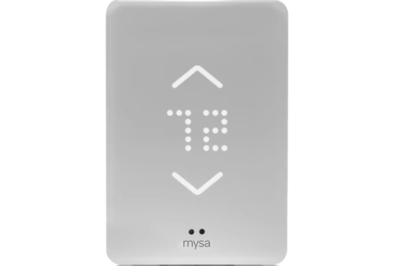
One of the few smart thermostats able to control inefficient electric baseboard heaters, the Mysa uses scheduling, geofencing, and an “Eco” mode to help you save money and energy.
Compatible with: Amazon Alexa, Apple Home, Google Home
If you have electric baseboard heating (or another type of high-voltage resistance heating), the Mysa Smart Thermostat (v2) adds smart control to those inefficient units. (It isn’t able to control cooling systems.) To help save money and energy—as much as 26% of your annual heating bill, Mysa claims—it makes use of scheduling, geofencing, and an “Eco” mode that subtly drops the temperature without affecting comfort. As many electric baseboard systems require a thermostat for every room, which can add up to a hefty price tag, for multiroom setups you may want to consider the more affordable Mysa Lite, which performs the same but has more basic controls and fewer features.
